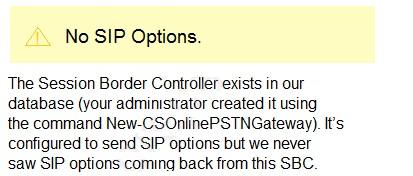At ValidExamDumps, we consistently monitor updates to the Microsoft MS-721 exam questions by Microsoft. Whenever our team identifies changes in the exam questions,exam objectives, exam focus areas or in exam requirements, We immediately update our exam questions for both PDF and online practice exams. This commitment ensures our customers always have access to the most current and accurate questions. By preparing with these actual questions, our customers can successfully pass the Microsoft Collaboration Communications Systems Engineer exam on their first attempt without needing additional materials or study guides.
Other certification materials providers often include outdated or removed questions by Microsoft in their Microsoft MS-721 exam. These outdated questions lead to customers failing their Microsoft Collaboration Communications Systems Engineer exam. In contrast, we ensure our questions bank includes only precise and up-to-date questions, guaranteeing their presence in your actual exam. Our main priority is your success in the Microsoft MS-721 exam, not profiting from selling obsolete exam questions in PDF or Online Practice Test.
You have a Microsoft Teams deployment.
You need to ensure that users can schedule meetings that have the following:
Presenter bios
Attendee registration
Registration management
Which two types of policies should you configure? Each correct answer presents cart of the solution.
NOTE: Each correct selection is worth one point.
B: Turn meeting registration on or off
Follow these steps in the Teams admin center to turn meeting registration on or off:
1. Open the Teams admin center.
2. Select Meetings from the navigation pane.
3. Under Meetings, select Meeting Policies.
4. Either select an existing policy or create a new one.
5. Within your chosen policy, navigate to the Meeting scheduling section.
6. Turn Meeting Registration setting On or Off.
7. Select Save
C: Live events policies are used to control who in your organization can hold live events and the features that are available in the events they create. You can use the default policy or create one or more custom live events policies. After you create a custom policy, assign it to a user or groups of users in your organization.
https://learn.microsoft.com/en-us/microsoftteams/set-up-meeting-registration
https://learn.microsoft.com/en-us/microsoftteams/teams-live-events/set-up-for-teams-live-events
You have a Microsoft Teams Phone deployment.
You need to implement PSTN connectivity by using Direct Routing.
What are three requirements for the implementation? Each correct answer presents part of the solution.
NOTE: Each correct selection is worth one point.
You have a Teams Phone deployment that contains a branch office.
You need to restrict toll bypass for a user based on the office in which the user is working during an inbound or outbound PSTN call.
What should you use?
Calling policies in Teams
In Microsoft Teams, calling policies control which calling and call forwarding features are available to users. Calling policies determine whether a user can make private calls, use call forwarding or simultaneous ringing to other users or external phone numbers, route calls to voicemail, send calls to call groups, use delegation for inbound and outbound calls, and so on.
You can use the global (Org-wide default) policy that's created automatically or create and assign custom policies.
Calling policies include:
* Prevent toll bypass and send calls through the PSTN
Turning on this setting sends calls through the Public Switched Telephone Network (PSTN) and incur charges rather than sending them through the network and bypassing the tolls. This setting is off by default.
https://learn.microsoft.com/en-us/microsoftteams/teams-calling-policy
You have a Microsoft Teams Phone deployment.
You are deploying Direct Routing.
All users have a SIP URI in the format of user@contoso.com. The Session Border Controller (SBC) is named sbc.voice.contoso.com.
When troubleshooting errors on the SBC, you receive the warning shown in the following exhibit.

What is a possible cause of the issue?
You have a Microsoft learns deployment.
You need to run a town hall that meets the following requirements:
* Additional client software or network hardware must NOT be required.
* Video content must be distributed without affecting network performance.
* Automatic site and VPN detection must be supported.
* Automatic NAT/firewall traversal must be supported.
What should you include in the recommendation?